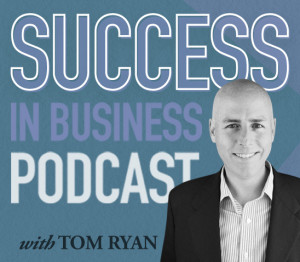Podcast: Play in new window | Download
 One of the most powerful funding tools available to first-time entrepreneurs and early stage companies is debt-based financing. Without a great credit history, however, getting a commercial loan from a traditional lender isn’t always the easiest thing to do. If only there was some way a startup could bring in a third-party to help secure that loan, much like getting a teenager getting their parent to co-sign on a car loan. For many entrepreneurs, the “ultimate co-signer” turns out to be the federal government in the form of the U.S. Small Business Administration (SBA).
One of the most powerful funding tools available to first-time entrepreneurs and early stage companies is debt-based financing. Without a great credit history, however, getting a commercial loan from a traditional lender isn’t always the easiest thing to do. If only there was some way a startup could bring in a third-party to help secure that loan, much like getting a teenager getting their parent to co-sign on a car loan. For many entrepreneurs, the “ultimate co-signer” turns out to be the federal government in the form of the U.S. Small Business Administration (SBA).
In today’s podcast, host and business coach Tom Ryan provides an overview of the SBA’s loan program. Learn how SBA loans work, what the eligibility requirements are, how the loans can be used, and how much money they can provide.
• Show opening, and explaining this week’s solo-cast
• Recap of the format switch from a daily to a weekly show
• Summary of the financing series thus far (4:00)
• 6 Methods for Raising Money for Your Startup (and Their Tradeoffs)
• Recap of debt-based funding discussion thus far (5:30)
• Introduction to SBA Loans (6:30)
• Small Business Investment Company (SBIC) (7:30)
• The SBA’s guaranteed loan program, and its role in lending (8:00)
• Mountain BizWorks as an example SBA-backed lender (8:30)
• The SBA’s role as the “ultimate co-signer” (9:30)
• Understanding the SBA’s loan guidelines (12:00)
• Why the SBA won’t guarantee loans for companies with access to “other financing on reasonable terms” (12:30)
• How an SBA loan works, and how they work with lending partners (14:00)
• SBA loan programs (15:30)
• Overview of the The 7(a) Loan Program (16:30)
• Uses for a 7(a) Loan (18:00)
- Long-term working capital for operational expenses, accounts payable and/or to purchase inventory
- Short-term working capital needs,such as seasonal financing, contract performance, construction financing and exporting
- Revolving funds based on the value of existing inventory and receivables
- Equipment, machinery, furniture, fixtures, supplies or materials
- Real estate, including land and buildings
- Constructing a new building or renovate an existing building
- Establishing a new business or assist in the acquisition, operation or expansion of an existing business
- Refinance existing business debt, under certain conditions
• Restrictions on an 7(a) Loan (21:30)
- Refinance existing debt if the lender is in a position to sustain a loss, where the bad debt would transfer to the SBA
- Affect a partial change of business ownership or a change that will not benefit the business
- Permit the reimbursement of funds owed to any owner
- Repay delinquent state or federal withholding taxes or other funds that should be held in trust or escrow
- Any purpose that is not considered to be a sound business purpose
• Building relationships with SBA-approved lenders (25:00)
• SBA loan amounts, and the $5 million loan ceiling (26:30)
• Sign off, and how to contact the show
